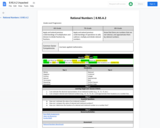
Estimate the value and compare the size of irrational numbers and approximate their locations on a number line.
- Subject:
- Mathematics
- Material Type:
- Activity/Lab
- Author:
- Liberty Public Schools
- Date Added:
- 04/13/2021
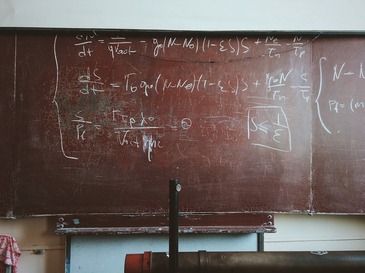

Estimate the value and compare the size of irrational numbers and approximate their locations on a number line.

This task is intended for instructional purposes so that students can become familiar and confident with using a calculator and understanding what it can and cannot do. This task gives an opportunity to work on the notion of place value (in parts (b) and (c)) and also to understand part of an argument for why the square root of two is not a rational number.
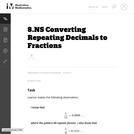
This is a task from the Illustrative Mathematics website that is one part of a complete illustration of the standard to which it is aligned. Each task has at least one solution and some commentary that addresses important asects of the task and its potential use. Here are the first few lines of the commentary for this task: Leanne makes the following observation: I know that \frac{1}{11} = 0.0909\ldots where the pattern 09 repeats forever. I also know that \frac{1}{9} = 0....
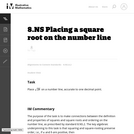
This is a task from the Illustrative Mathematics website that is one part of a complete illustration of the standard to which it is aligned. Each task has at least one solution and some commentary that addresses important asects of the task and its potential use. Here are the first few lines of the commentary for this task: Place $\sqrt{28}$ on a number line, accurate to one decimal point....
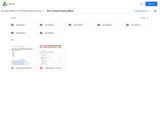
Eureka Math 8th Grade
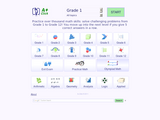
A+ Click is an interactive collection of more than 3700 math problems and answers for K-1 K-12 school program. It defines the personal level of math knowledge. You move up into the next level if you give 5 correct answers in a row. Practice makes perfect.
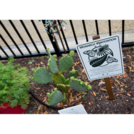
In this lesson, students will develop their fluency with addition and subtraction through a "real-world" application of collecting data about insects in the garden.
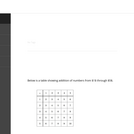
The purpose of this task is to study some patterns in a small addition table. Each pattern identified persists for a larger table and if more time is available for this activity students should be encouraged to explore these patterns in larger tables.
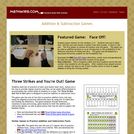
Students place markers on the numbers 2-12. Students toss two 6-sided dice, find the sum and remove a marker from that number, if there is still one. The first player to remove all markers wins the game. This game can be used as addition practice or as an introduction to the probability of the different outcomes of rolling two dice. This game was developed by a Monmouth University student for the Probability Fair. These games help students acquire proficiency in addition and subtraction facts.
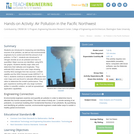
Students are introduced to measuring and identifying sources of air pollution, as well as how environmental engineers try to control and limit the amount of air pollution. In Part 1, students are introduced to nitrogen dioxide as an air pollutant and how it is quantified. Major sources are identified, using EPA bar graphs. Students identify major cities and determine their latitudes and longitudes. They estimate NO2 values from color maps showing monthly NO2 averages from two sources: a NASA satellite and the WSU forecast model AIRPACT. In Part 2, students continue to estimate NO2 values from color maps and use Excel to calculate differences and ratios to determine the model's performance. They gain experience working with very large numbers written in scientific notation, as well as spreadsheet application capabilities.
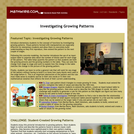
Introduce elementary students to the concept of functions by investigating growing patterns. Visual patterns formed with manipulatives are especially effective for elementary students and allow them to concretely build understanding as they first reproduce, then extend the pattern to the next couple of stages.
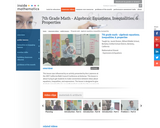
This lesson is about trying to get students to make connections between ideas about equations, inequalities, and expressions. The lesson is designed to give students opportunities to use mathematical vocabulary for a purpose to describe, discuss, and work with these symbol strings.The idea is for students to start gathering global information by looking at the whole number string rather than thinking only about individual procedures or steps. Hopefully students will begin to see the symbol strings as mathematical objects with their own unique set of attributes. (7th Grade Math)
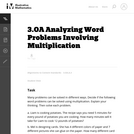
In this task, the students are not asked to find an answer, but are asked to analyze word problems and explain their thinking. In the process, they are faced with varying ways of thinking about multiplication.
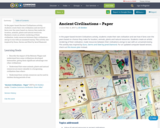
In the paper-based Ancient Civilizations activity, students create their own civilization and see how it fares over the years based on choices they make for location, animals, plants and natural resources. Students create an artistic rendering of their civilization, trade resources between their civilizations and go to war with an unnamed enemy. This activity was inspired by Guns, Germs and Steel by Jared Diamond.

Students are introduced to the classification of animals and animal interactions. Students also learn why engineers need to know about animals and how they use that knowledge to design technologies that help other animals and/or humans. This lesson is part of a series of six lessons in which students use their growing understanding of various environments and the engineering design process, to design and create their own model biodome ecosystems.
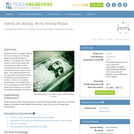
Students create four-legged walking robots and measure how far they travel across different types of surfaces. They design and create "shoes" to add to the robots' feet and observe the effect of their modifications on the net distance traveled across the various surface types. This activity illustrates how the specialized locomotive features of different species help them to survive or thrive in their habitat environments. The activity is best as an enrichment tool that follows a lesson that introduces the concept of biological adaptation to students.

In this problem-based learning module, students will be asked to brainstorm ideas and think innovatively both independently and collaboratively in addressing a real-world problem that is relevant to their daily lives and health. Are students aware of their calorie intake and how it affects their overall health? Students will investigate the calories consumed in a typical day and how much physical activity is needed to stay healthy and fit. Students/teams will be encouraged to use the internet for research purposes in their design phase. Students will utilize various online platforms to design an infographic that can be shared with relevant individuals in the community and others in the school building
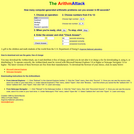
How many computer-generated arithmetic problems can you answer in 60 seconds?

Remember your multiplication tables? ... me neither. Brush up on your multiplication, division, and factoring skills with this exciting game. No calculators allowed! The students will be given mutiplication and division problems which they must answer. They also have the option of being given a number then stating the factors of how that number was attained using either multiplication or division.
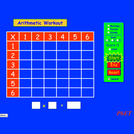
Brush up on your multiplication, division, and factoring skills with this interactive multiplication chart. Three levels and timed or untimed options are available.